Shelterbelts
Shelterbelt Design
Design Considerations:
There are a wide range of considerations for successful shelterbelt operation, and these vary from location to location. The full review here provides both a detailed summary and a comprehensive list of references. Some examples include:
- Optimized edge benefits occur when there is a gradual transition (soft edges)
- Shelterbelts along fence-lines provide both potential biolinks and good habitat in their own right – but if they have reasonable width they may also provide support for edge and some woodland species
- The shelterbelt will protect a distance of around 10 times their height when placed perpendicular to the prevailing wind
- A whole-farm approach is more effective than selecting single paddocks
- Shelterbelts running around corners are more effective across a range of wind directions and it is good practice to start and end in low-lying areas if possible
- Single row shelterbelts generally are not recommended – multiple row belts (see2) provide better protection and have the advantage of encouraging species diversity
- 12-24 m wide belts with 3-6 rows containing the highest plants in the centre appear to be the most effective and stock should be exclude
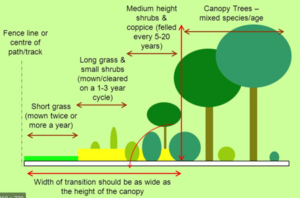
(Edge schematic available here.)
How do Shelterbelts Work:
The shelterbelts block and diffuse air flow (see figure1), with resulting decrease in evapotranspiration, increase in soil temperature and relative humidity, and decrease in temperature chill effects of cold air. As can be seen in the figure, these benefits extend out across the paddock to around 10-20 times the height of the shelterbelt plants.
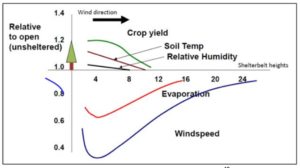
Benefits:
Properly designed shelterbelts provide benefits that outweigh their costs. To quote just a few of the many benefits, shelterbelts:
- Increase shelter for stock, pasture and crops, with the benefits far exceeding the loss of acreage – for example, if 10% of the property is devoted to properly-designed shelterbelts the potential reduction in winds is 35-50%
- This sheltering has been shown to reduce lamb losses by up to 50%, increase crop production substantially, and increase meat yield in cattle by 20-30%
- The mixed bird and predator insect populations supported by well-designed shelterbelts decreases the need for pesticides and increases the mix of pollinators, especially if fallen timber and debris is left to lie
- Farm capital value has been shown by independent valuations to increase by 15% to 35% from the implementation of comprehensive shelterbelt systems.
Detrimental Impacts include:
- Cost of implementing the shelterbelts, including fencing and longer-term maintenance
- Loss of acreage plus potential invasion by tree roots into surrounding pasture
- Potential additional fire risk and providing protection for detrimental species such as rabbits.
The strong overall conclusion of the study is that, provided care is taken with design and construction, shelterbelts are an excellent investment with returns much larger than the costs.
Poor Shelterbelt Structure:
- Exotic species and sharp edges
- Cypress forms an impermeable barrier
- Pinus radiata is too open below
- Monocultures are bad for biodiversity
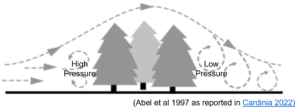
The science is in…Pine shelterbelts offer little or possibly negative benefit for paddock protection, biodiversity, farm productivity; Provides no additional or decreases climate resilience; Are killed by bushfire.
Good Shelterbelt Structure:
- Smooth top
- Local, suitable plants
- Permeable (40%)
- 5 rows, 15-25 m wide
- Leave dead timber
- Add native sedges and grasses along edge.
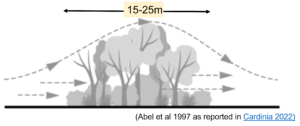
Shelterbelts consisting of locally indigenous trees, shrubs and ground cover Maximise paddock protection, biodiversity, farm productivity; Provide increased climate resilience; Ameliorates bushfire impact and aids recovery.
Try to Avoid:
- Narrow, dense or open shelterbelts – make the width 15-25 m, 5 rows
- Wind accelerators – such as shelterbelt ends (wind speeds up around the edge) and gaps (air speeds up through the gap and forms a jet that can extend across the paddock).
- Species sensitive to climate change
- Piecemeal approaches – work from a whole-of-farm plan and preferably a neighbourhood plan.
The Whole of Farm Approach:
- Take a whole of farm view
- Make use of existing features
- Consider nearby external features, neighbouring vegetation
- Include bush patches
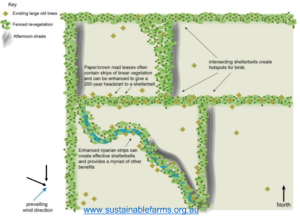
Maintenance:
Sustained and well-supported maintenance is required to fully achieve the biodiversity and productivity benefits, for example:
- Coordinated control of exotic weeds and pests
- Retaining or planting of appropriate local vegetation mixes, and refraining from introducing monocultures
- Enhancing the on-site ecological health (and productivity) by minimising use of pesticides and encouraging the natural system to control pests
- Retaining ancient native tree and bush species, and fallen debris to provide homes and habitats for beneficial species
- Expanding areas of native grasses especially along edges
- Controlling feral animals, especially foxes, cats, rabbits, and several exotic bird species, which are heavily impacting our native fauna.
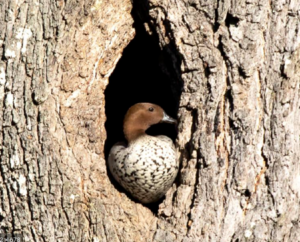
FURTHER READING
1. A Neglected Benefit of Biolinks
3. The Value of Biolink Revegetation
